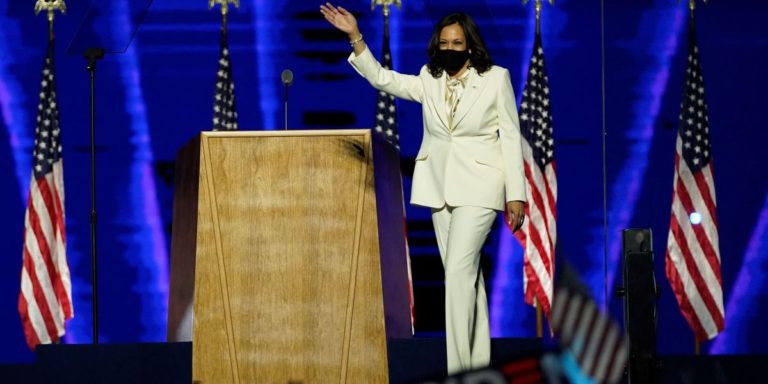
[ad_1]
Sen. Kamala Harris’s victory in the U.S. presidential election alongside Joe Biden was cause for celebration among those eager to see the first woman in the nation’s second-highest office. But her ascension comes with a side effect: There will now be zero Black women in the U.S. Senate.
Elected to the Senate in 2016, Harris was the sole Black woman to serve in the body—and only the second in the institution’s history. (The first was Sen. Carol Moseley Braun, elected in 1992.)
“It’s enormously consequential that she will be VP, and I don’t want to make it sound like bad news,” says Debbie Walsh, director of the Center for American Women and Politics at Rutgers University’s Eagleton Institute of Politics, “but it’s disappointing that the bench of Black women is so shallow that if one rises up to another office there’s no one there at all.”
While the House of Representatives has made progress in electing women of color—22 Black women are serving in the House in the 2019–21 Congress—the Senate continues to lag behind. That discrepancy is largely due to the specific challenges that come with running for statewide office. Case in point: While there have been two Black female senators, there has never been a Black female governor.
“There’s been an assumption that the only place Black women can run and succeed is majority-minority districts,” says Walsh. “States aren’t that.”
That assumption, whether by party leaders or donors, hurts the prospects of Black women who would be qualified to pursue these seats, Walsh says. (In her own election to the Senate, Harris held an advantage as a former attorney general and previous statewide officeholder.) But that line of thinking has the potential to change; races like Rep. Lauren Underwood’s fight for reelection in Illinois’s 14th District show that Black women can win in locations that are not majority Black, even if those races still aren’t statewide. And Harris’s own viability as a VP candidate helps make the case for Black women’s electability in statewide offices too, Walsh says.
Still, there are significant hurdles. Senate candidates often receive party support based on their fundraising potential—and candidates of color are less likely than their white counterparts to have wealthy networks to tap into, says Kimberly Peeler-Allen, cofounder of Higher Heights for America, an organization that includes a PAC working to elect Black women to office.
The vast majority of Black female politicians are Democrats (only one Black Republican woman, Utah Rep. Mia Love, has ever served in the House). That further limits the number of seats where there would be a chance of electing a Black woman to the institution.
“It’s going to take a concerted effort by the parties. It’s going to take rethinking what’s possible and who’s electable,” Walsh says of how to ensure representation of Black women in the Senate never again gets to zero.
The makeup of the incoming Senate could still change; California Gov. Gavin Newsom will appoint a politician to Harris’s former seat in the state. And if Biden selects any sitting senators for his cabinet, those seats will, in most cases, be filled by an appointee.
Unless an open Senate seat is filled by a Black woman appointee, the prospects of the Senate having another Black female lawmaker anytime soon are low. (The Senate does include three other women of color: Democratic Senators Catherine Cortez Masto of Nevada, Tammy Duckworth of Illinois, and Mazie Hirono of Hawaii.)
“Looking at the map, it’s a tough road unless in one or more of the Democratic states someone retires,” says Peeler-Allen. “It’s going to be a challenging environment in 2022 and 2024.”
In the 2020 primaries, 13 Black women filed to run for the Senate, according to the Center for American Women and Politics. Only one—Tennessee Democrat Marquita Bradshaw—advanced to the general election. She lost with 35% of the vote last week.
As VP, Harris will serve as the Senate’s tiebreaker—but won’t be part of the group of 100. During her time as the Senate’s sole Black female member, she brought a unique perspective, including her work on issues like anti-lynching legislation.
Between Moseley Braun’s departure from the Senate and Harris’s arrival, there was a gap of 18 years. Organizers and donors working to elect women of color hope the lag this time won’t be as long.
Says Walsh: “Unfortunately, folks who have power don’t relinquish it easily.”
More on the most powerful women in business from Fortune:
- 2020’s Most Powerful Women list
- 15 women who paved the way for Kamala Harris
- Black women put Kamala Harris in the White House. Here’s how they feel about making history
- Who is Lael Brainard? What to know about Biden’s likely pick for Treasury Secretary
- Michelle Wie West on her golf comeback plan: I want my daughter to see me play
[ad_2]
Source link